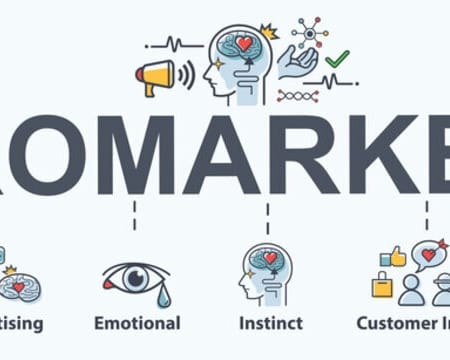Uncertainty is undoubtedly one of the largest barriers to decision-making.
Neuromarketing, often called consumer neuroscience is a relatively new field of marketing that uses neuroscience to understand better how consumers make decisions.
By understanding what is going on in the brain when someone sees or interacts with a product, businesses can create marketing campaigns that are more likely to result in a sale.
It is essential to understand what neuromarketing is, how it works, and some of its benefits for businesses.
What is Neuromarketing marketing?
Neuromarketing is a relatively new area of marketing that uses neuroscience to understand better how consumers make decisions.
It looks at factors, including brain activity, eye movement, and other biometric measures to see what people think and feel when interacting with a product or service.
While neuromarketing is still in its early stages, it has already shown promise in helping businesses understand their customers better and create marketing campaigns that are more likely to achieve their goals.
Companies can apply neuromarketing in a variety of ways.
Businesses, for example, can employ eye-tracking technology to detect where consumers glance when they view a product or advertisement. They can use the data gathered to improve the effectiveness of marketing materials, customer touch points and marketing funnels.
It is also possible to track brain activity to identify which areas in the brain are active when people make purchasing decisions. This data can assist firms in determining which messages are most likely to resonate with customers and decide when and how to put the message forward.
For example, a study revealed that customer responses vary when the price is displayed before the product rather than after it influencing the purchase decisions.
In addition to helping businesses create more effective marketing campaigns, neuromarketing can also improve the customer experience.
By understanding how customers react to different products and services, businesses can change their offerings to ensure that they provide the best possible experience for their customers.
What is the difference between conventional marketing and consumer neuroscience?
While traditional marketing methods usually look at factors such as demographics, customer surveys, and focus groups to understand consumers, neuromarketing uses neuroscience techniques and tools to study the brain and see how people react to products and marketing messages.
In other words, it looks at factors on a rudimentary level by combining physiology and psychology to inform marketing decisions.
Traditional methods focus mainly on understanding what people say they want, while neuromarketing focuses on understanding what people genuinely want—their unspoken desires.
Traditional marketing methods often rely on gut instincts. In contrast, neuromarketing relies on data and scientific research. Though there is nothing inherently wrong with using gut instinct (because sometimes experience has it right)the data-based approach reduces the risk of faulty decisions
Neuromarketing is still in its early stages, but it has already shown promise in helping businesses understand their customers better and create more effective marketing campaigns.
Neuromarketing In Action
Coca-Cola
Coca-Cola maintains its brand recognition by marketing with not only the red and white coloring and the scripted logo but with the use of the coke bottle itself. Its logo design targets sight, taste, sound, smell, and touch.
Coca-Cola is one of the best examples of positive sensory marketing that has shown tremendous branding results.
An experiment conducted by Pepsi and Coca-Cola revealed that brand images linked to each drink are more likely to influence individuals' preferences than the taste itself.
In this experiment, subjects received two drinks Coca-Cola and Pepsi: In a blind and open experiment.
Using functional magnetic resonance imaging (fMRI), researchers discovered that when subjects did not know the brand, they favored Pepsi; but when they knew what brand they were drinking, brain activity in memory and emotion centers favored Coke over Pepsi.
This experiment clearly shows the disconnect between what people want and say they want.
Coca-Cola is one of many companies using neuromarketing to create more effective marketing campaigns.
For example, a car company might use neuromarketing techniques to study how people reacted to car commercials and find that the ads that produced the strongest reaction from participants are those that featured the car driving in an exciting environment (such as on a race track).
They can then use the information to create a new ad campaign that features the car driving in a similar environment to stimulate customers' decision in purchasing their vehicle.
In Conclusion
Neuromarketing is a powerful tool used by companies to create more effective marketing campaigns, improve customer experience and strengthen brand equity.
By understanding how customers react to different products and services, businesses can change their offerings to ensure that they are providing the best possible experience to their customers.
However, companies can use data from neuromarketing studies or experiments for unethical or harmful ends.
Some such questions arise: is it moral for companies to sell to our subconscious selves? or isn't it better to let them do so because they might know us better and thus fulfil our needs?
Hence, it is essential to have the right environment that supports such studies to be conducted under the most ethical supervision and with the most reasonable outcome at heart.
References:
How Marketing Affects the Brain. (2016). https://splashomnimedia.com/blog/how-marketing-affects-the-brain
Morin, C. Neuromarketing: The New Science of Consumer Behavior. Soc 48, 131–135 (2011). https://doi.org/10.1007/s12115-010-9408-1
Sánchez-Núñez P, Cobo MJ, Vaccaro G, Peláez JI, Herrera-Viedma E. Citation Classics in Consumer Neuroscience, Neuromarketing and Neuroaesthetics: Identification and Conceptual Analysis. Brain Sci. 2021 Apr 27;11(5):548. doi: 10.3390/brainsci11050548. PMID: 33925436; PMCID: PMC8146570.
Clark, Kimberly. (2017). "The Future of Consumer Neuroscience" in Cerf, M. & Garcia-Garcia, M. (2017) Consumer Neuroscience. MIT Press. ISBN: 978-0-262-03659-7. https://mitpress.mit.edu/books/consumer-neuroscience
Contributor, G. (2017). Advances in Neuromarketing and Your Buying Decisions: What Can’t Speak Can’t Lie. https://spendmatters.com/2017/07/11/advances-neuromarketing-buying-decisions-cant-speak-cant-lie/
Subscribe to our email newsletter and unlock access to members-only content and exclusive updates.

Comments